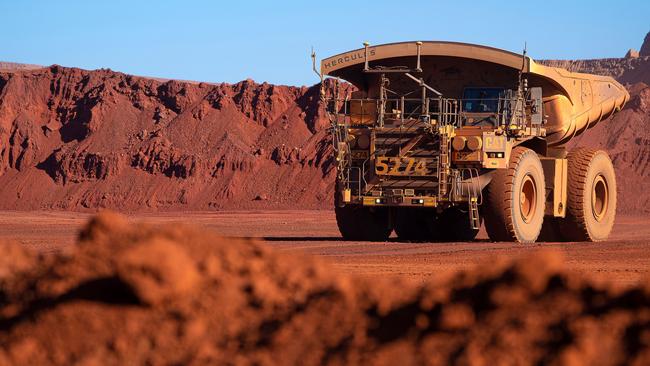Interest rates and share dividends: wait a while to see the impact
Miners and banks will dominate dividends this reporting season, and it will take time to see and measure the effects of Reserve Bank rate cuts.
Business
Don't miss out on the headlines from Business. Followed categories will be added to My News.
Cuts in interest rates this year will make Aussie share dividends more attractive, but other factors are likely to impact investors’ returns more.
The stock market’s recent run to record highs has lowered its average dividend yield to 4.2 per cent from around 4.7 per cent in mid-2023.
Share specialists expect solid dividends this reporting season, led by miners and banks, but warn that the tradition of paying higher dividends than offshore markets such as the US is holding back capital growth.
IG market analyst Tony Sycamore said the ASX’s traditional 4.5 per cent dividend yield was “extremely attractive” when official interest rates were so low a couple of years ago.
Nobody is expecting a return to the pandemic-driven 0.1 per cent Reserve Bank cash rate, but even if the RBA cut from the current 4.35 per cent to 3.85 per cent this year, that would put dividends in a more favourable light, Mr Sycamore said.

He said share returns were likely to be more affected by economic factors, China and the US, rather than dividend yields.
Investors should not simply chase high dividend yields, which can reflect a stock in trouble.
Among Australia’s 300 largest stocks, nine of the 10 highest dividend-yielding companies have had a negative share price return over the past year – several down more than 50 per cent.
“Sometimes the higher-yielding stocks aren’t the ones you want to be involved in because the level of dividend isn’t sustainable and sometimes the share price has fallen too,” Mr Sycamore said.
Mr Sycamore expects healthy dividends this reporting season and said miners and banks would again be the high-yielding stocks to watch.
He said the iron or price was around $US125-$US130 a tonne while “the cost of pulling it out of the ground is close to $15 … and the banks are fairly cozy in their environment”.
Bell Direct market analyst Grady Wulff said earnings forecasts for this financial year were flat, and at just 2.5 per cent growth for 2024-25, so dividends were unlikely to rise much soon.
“Any investors expecting interest rate cuts to filter through to dividends will need to understand that this will take time,” she said.
“More importantly, falling interest rates makes investing in equities more attractive as rates and the returns on term deposits or cash and fixed interest investments fall.”
Ms Wulff said if interest rates dropped over the next few years, companies with higher debt levels would pay less interest and could have more cash to return to shareholders, but corporate earnings remained the biggest driver of dividends.
Shaw and Partners senior investment adviser Jed Richards said many people focused too much on dividends and not enough on total shareholder returns.
“Australian share prices don’t grow as much as international share prices because in Australia they pay out most of their profits in the form of dividends, and don’t have enough money to go and grow the business,” he said.

An example this was the lower-yielding US market, where the Dow Jones index had jumped from 13,000 to 38,000 points since 2007, while the ASX was only slightly higher since then.
Mr Richards low interest rates would help the economy and encourage higher profits, lifting dividends eventually.
He said people chasing higher yields could consider bank hybrids or fixed interest that carried less risk than shares.
“The market has pre-empted rate cuts coming and that why shares have rallied in the last three months,” he said.
“However, the markets may have jumped the gun.”
Ms Wulff said ASX-listed companies focused a lot on rewarding shareholders via dividends, which typically came with attached franking credits.
“We have a lot of companies in Australia that generate revenue overseas and have lower relative payout ratios,” she said. “However, a lot of the larger dividend paying stocks in Australia do have higher yields, restricting their ability to grow as they don’t reinvest their excess capital compared to a lot of overseas counterparts.”
Originally published as Interest rates and share dividends: wait a while to see the impact





